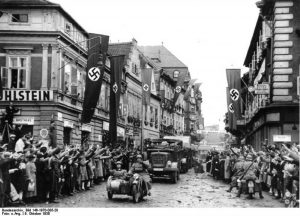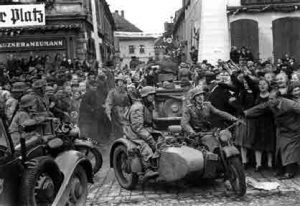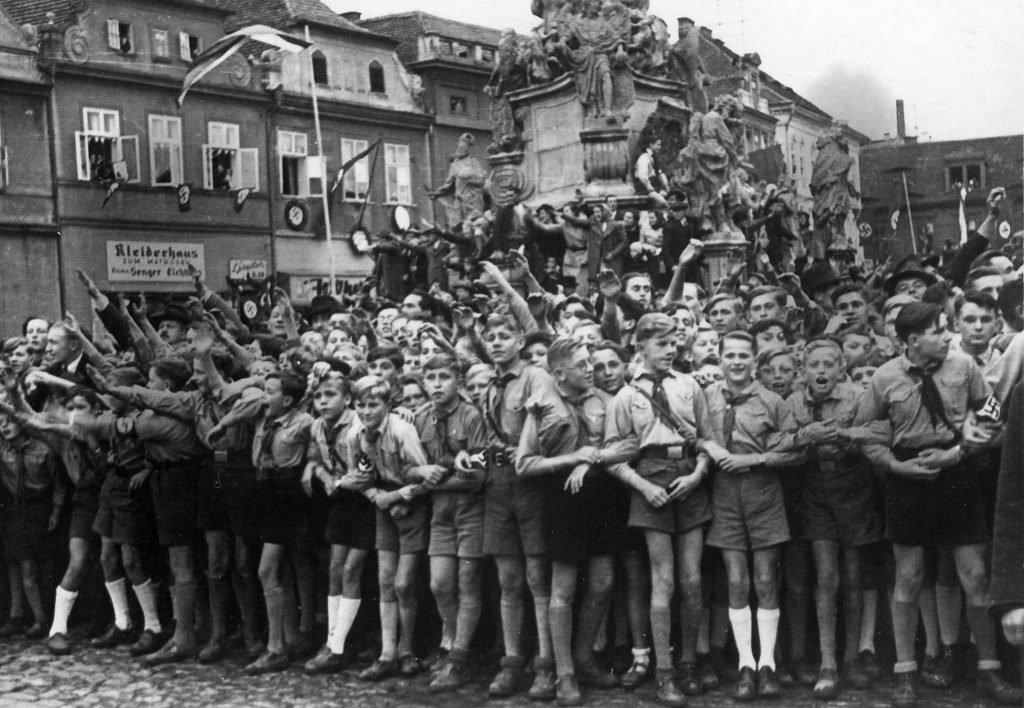The Formation of Racial and Anti-Semitic Hatred Toward Jews 1895-1938
Racist anti-semitism in the Sudetenland advocated in the late 19th century by a radical minority of Germans . Efforts to exclude Jews and against the equality in society worked only latently . A major role in this played the in Czechoslovakia in 1919 newly founded National Socialist German Workers Party (NSDAP) of which the ideological leader was Rudolf Jung. He later played an important role in Reich where the German NSDAP was founded a year later. These parties were clearly anti-Semitic and collaborating with each other.
When in 1933, threatened by ban of the Czechoslovak government and dissolved itself. A few days later was created the so-called Sudetenheimatfront which have been accepted by most of their members. In 1935, this party renamed to the Sudeten German Party (SDP) and under the leadership of Konrad Henlein it became the most important political factor in the borderlands
.The racist anti-Semitism at that time was not yet at its full strength. Tens of thousands of Sudeten Germans, however, accepted in silence the separation of their Jewish neighbors. Anti-Semitism began to be tolerated. For most of the Sudeten Germans, however, it was a first national struggle against the Czechs.
„Anschluss“ of Austria, the connection to the empire in 1938, however, was a milestone for the Sudetenland. SDP openly affirmed to German National Socialism, and even the question of the Jews (Judenfrage) has taken a clear position that in their statutes adopted also own Arian paragraph. SDP now clearly focused on the empire and adapted their internal division to the German NSDAP. The party‘s base rose to number over 1.3 million members and only few could avoid this movement.
Since March 1938 there were regular skirmishes and violence against Jews, Czechs and the German Social Democrats. These actions were carried out by members of the SDP and were coordinated from the Empire. In some cities clearly urged Jews to sell and run. It was a Sudeten German variant of „street fighting“ („Strassenkampf“). The peaceful solution with Heinlein and his party could not occur.
In September 1938, it culminated the Sudeten crisis and pressure on the Jews. From more than nine hundred Jews who lived there early thirties stayed in Saaz only about a little over a hundred people. Most of those were not too wealthy, or those who feel sure, such as doctors who did not abandon their patients. Some cities in the Sudetenland has been reported as cleaned from the Jews (“judenfrei”).
Source: Jörg Osterloh: Nationalsozialistische Judenverfolgung im Reichsgau Sudetenland (Nazi Persecution of Jews in the Sudetenland) 1938-1945. München 2006 | Adolf Seifert: Die Stadt Saaz im 19. Jahrhundert (Saaz in the 19th Century). Saaz 1902.



